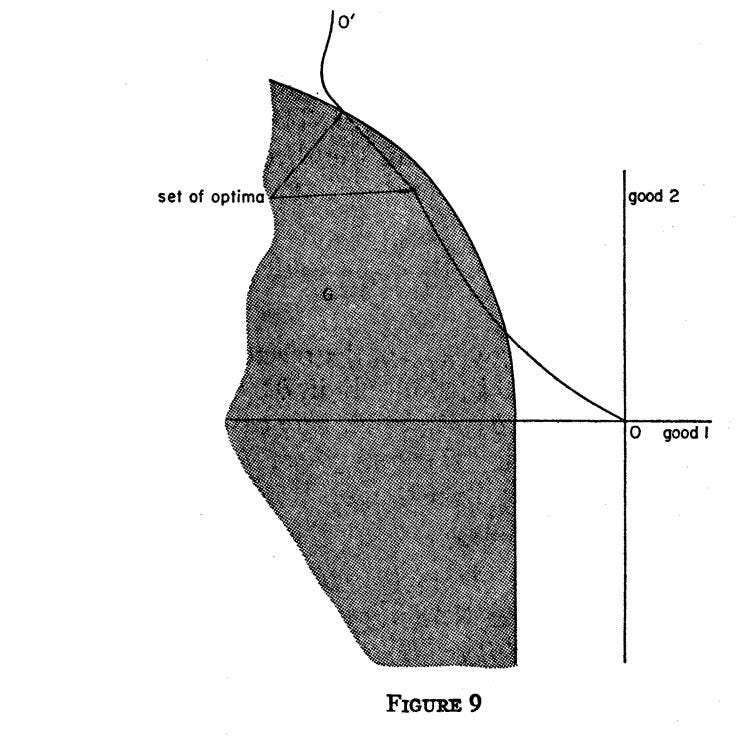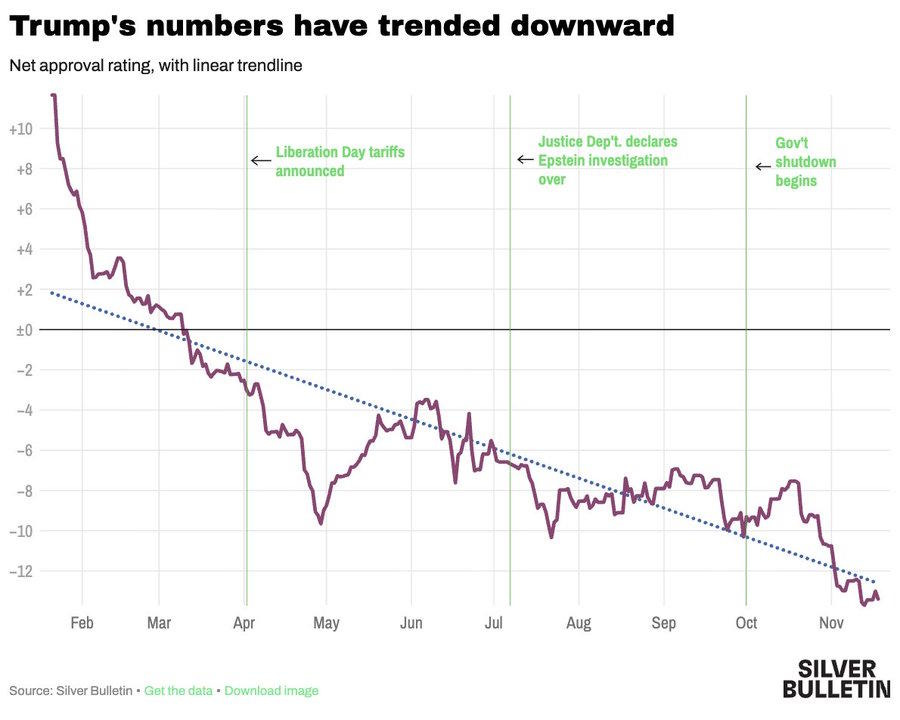|
The economics theory that could have saved the Trump presidency
Sometimes it's good to listen to the economists.
 |
Americans are not very happy with Donald Trump’s second term in office. Trump’s approval has trended downward since he returned to power, and has recently fallen again. Here are some numbers from Nate Silver:
 |
Even Fox News admits how bad it’s getting:
Unhappy with the economy. Pain with prices. Unsure about Trump administration policies. It adds up to high disapproval among the president’s loyal constituencies…
Some 76% of voters view the economy negatively. That’s worse than the 67% who felt that way in July and the 70% who said the same at the end of former President Biden’s term…Large numbers, overall and among Republicans, say their costs for groceries, utilities, healthcare and housing have gone up this year…Voters blame the president. About twice as many say President Donald Trump, rather than Biden, is responsible for the current economy. And three times as many say Trump’s economic policies have hurt them (they said the same about Biden’s last year). Plus, approval of how Trump is handling the economy hit a new low, and disapproval of his overall job performance hit record highs among core supporters…
Trump’s job performance drew career-high disapproval among men, White voters and those without a college degree…Among all voters, 41% approve of the job Trump is doing, while 58% disapprove…For comparison, Biden’s marks were a bit better at the same point in his presidency: 44% approved and 54% disapproved in November 2021.
As Fox points out, it’s the economy, rather than immigration policy or culture wars, that’s driving these results. Despite employment, growth and inflation numbers that don’t seem too bad overall, Americans are deeply unhappy with their economy. Preliminary numbers for November’s consumer sentiment show it falling back to the low point it hit in 2022, during the height of the post-pandemic inflation:
 |
And as Fox notes, voters overwhelmingly blame President Trump, rather than Biden, for the economy. Even 42% of Republicans blame Trump rather than Biden, which must be a galling thing to tell a pollster on the phone. Analysis by David Shor finds that Republicans’ trust advantage is evaporating on issues like the cost of living, the budget deficit, and the economy in general.
Exactly why Americans hate their economy right now is a tough question. Sometime during the Biden administration, we saw economic sentiment decouple from the macroeconomic numbers that traditionally correlated with sentiment — in other words, we saw the beginning of the “vibecession”. Now after a modest recovery in 2024, we’re seeing another vibecession under Trump. What’s going on? Is it mortgage rates? Anxiety about AI? Are people displacing their concerns about social unrest onto their perceptions of economic conditions?
One possibility is that Americans are expressing their unhappiness about economic policy, rather than economic results. Both Trump’s approval and consumer sentiment fell abruptly during the recent government shutdown, and they also hit a previous low in May after Trump’s “Liberation Day” tariffs were announced. So low consumer sentiment, and low Trump approval ratings, might be Americans’ way of expressing unhappiness about what Trump is trying to do to the economy.
People must have an intuitive sense that the AI boom is the main thing propping up the macroeconomy right now, and that this could end at any moment. And they probably realize that the AI boom is having to fight against the headwinds created by Trump’s tariffs. They can also see that tariffs are causing localized harm to parts of the U.S. economy right now.
The part of the economy being hurt the most is manufacturing — exactly the sector that Trump has long pledged to help. Even as employment holds up in service jobs like health care and education, employment in goods-producing industries has plunged since “Liberation Day”:
 |